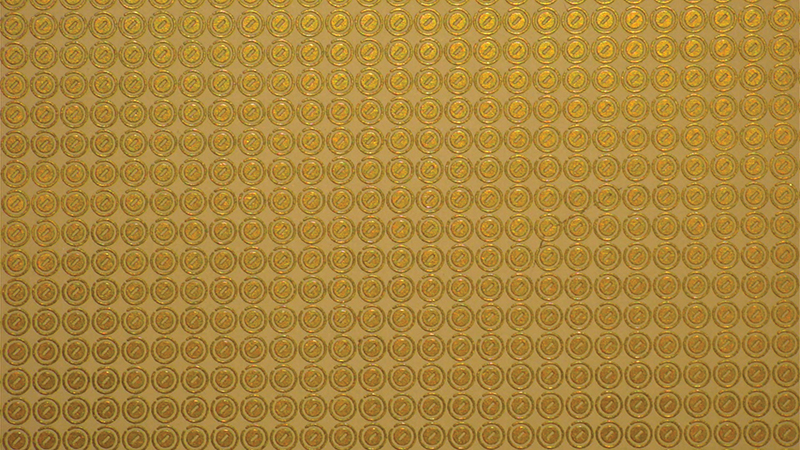2D metamaterial sends the right signal to 6G networks
An ultra-thin 2D surface could arm next-gen 6G satellites with improved signal quality and remote sensing, and also carry more data.

An international team of engineers, led by the University of Glasgow, UK, reports that the 2D metamaterial marks a step towards resolving the issue of linear polarisation.
As the antennae are designed to transmit and receive either vertical or horizontal electromagnetic (EM) waves, linear polarisation can cause misalignment, culminating in signal degradation. Signal distortion can also occur because linear polarisation is susceptible to rain fading and ionospheric interference.
The team’s design focuses on achieving wide and multi-band circular polarisation.
Circular polarisation is highly resistant to atmospheric effects, ensuring stable connections, explains the research team. It is especially beneficial in mobile applications, as it eliminates the need for precise antenna alignment.
It also doubles channel capacity by using both right-hand and left-hand circular polarisations (RHCP and LHCP). This flexibility simplifies antenna design for small satellites, while improving tracking and providing robust communication links in challenging environments, making it ideal for modern satellite systems.
Dr Qammer H. Abbasi at the University of Glasgow says, 'Satellite-based communication application demands circular polarisation in two distinct, non-adjacent bands, with orthogonal polarisations at greater oblique angles considering the unpredictable incident angles of EM waves.'
'This ensures enhanced isolation between transmitted and received signals, particularly in environments with low-power-flux densities to real-time interference.'
The new metamaterial is made from tiny cells of geometrically patterned copper, with a compact unit cell length of 2 = 0.17λomm and a thickness of 0.64 = 0.05λomm, where λo is the central wavelength, Abbasi explains. This is then laid over a commercial circuit board.
The first step is to design a slotted outer ring that helps the ultra-thin surface to achieve circular polarisation in lower bands only. Next, an inner ring is introduced to achieve the same in higher bands.
The final, and most challenging, step is to optimise the design to achieve angularly stable circular polarisation in both bands.
'When an EM wave interacts with the structure, it produces x- and y-polarised transmitted and reflected EM waves,' explains postdoctoral researcher Dr Humayun Zubair Khan, who now works at the National University of Sciences and Technology in Pakistan.
'The ultimate reflected wave arises through multiple reflections between these transmitted waves and the lower metallic ground. Crucially, intentional control of the phase and magnitude of the reflected EM wave is achieved by regulating interactions within the dielectric and ground plane.'
Professor Muhammad Imran, who leads Glasgow’s communications, sensing and imaging hub, says the minimum bandgap between the four distinct bands is 1.62GHz.
In addition, the material’s ability to maintain more than 95% polarisation conversion ratio, up to 45°, means it can outperform competing technologies.
He adds that conventional printed circuit board manufacturing techniques can be employed.
Abbasi says the 2D metamaterial provides the polarisation conversion required across the Ku-band (13.5-18.0GHz), K-band (18.0-26.5GHz), and Ka-band (26.5-38.5GHz) frequency ranges.
'The converter achieves LHCP in the Ku- and Ka-bands within the frequency ranges of 14.57-15.65GHz and 27.47-33.85GHz for y-polarised incident EM waves.
'Additionally, it provides RHCP in the K- and Ka-bands at 17.27-23.92GHz and 35.87-38.32GHz for y-polarised incident EM waves.'
To evaluate the metamaterial’s ability to consistently achieve high performance when radio waves impinge at oblique angles, the researchers analysed its polarisation conversion, reflection, transmission and phase control efficiency as the angle changes.
Abbasi concludes that beyond 45°, 'losses are high and the performance degrades'.







